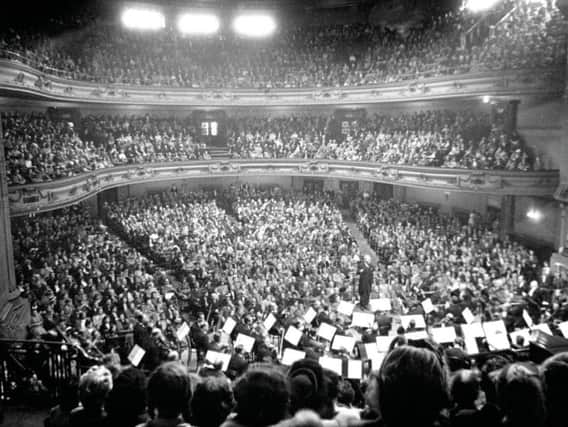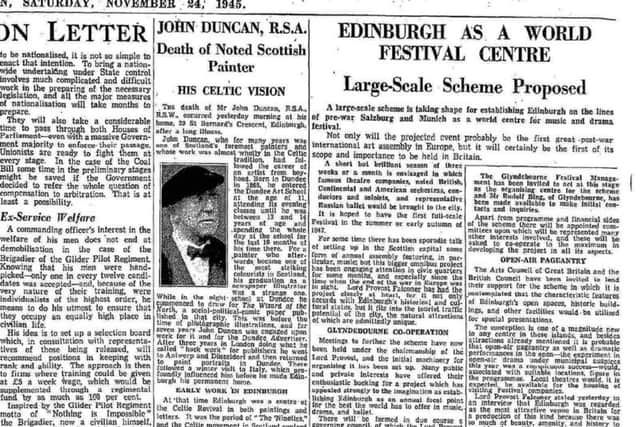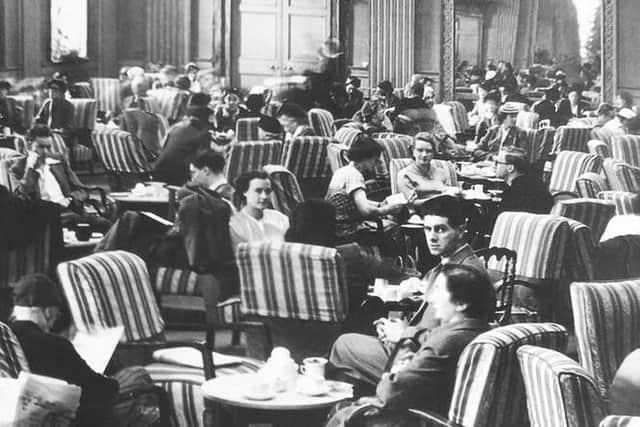Archive reveals how rations helped make the first Edinburgh Festival happen


The online treasure trove launched today reveals how the pages of The Scotsman and Evening News, which announced plans for the festival, were hit with an “avalanche” of correspondence in 1947, with the majority backing the idea.
The EIF’s new “storytelling” site recalls how 6000 home-owners in Edinburgh offered their homes for festival guests following a plea from the then Lord Provost John Falconer because hotels had not yet been re-requisitioned from military use in the Second World War.
Advertisement
Hide AdAdvertisement
Hide AdThe people of Edinburgh helped to overturn a ban on Edinburgh Castle being lit up for the festival by donating their own coal rations to help welcome visitors to the city, and also helped dress the city with flowers and flags in time for the event.


Volunteers also manned a Festival Club at the Assembly Rooms on George Street, preparing and cooking 2500 meals a day for visitors to the city, while the festival liaised with the Ministry of Food to ensure there were enough ingredients at a time of post-war rationing.
The original inspiration for the festival was said to have been inspired in 1942 during a walk along Princes Street by the Austrian-born opera impresario Sir Rudolf Bing, general manager of Glyndebourne Opera, and the soprano Audrey Mildmay.
The online archive reveals how news of moves to set up a new festival in Edinbugh was first reported in November 1945 - less than three months after the end of the war.
Advertisement
Hide AdAdvertisement
Hide AdA article in The Scotsman, which appeared below the headline “Edinburgh as a world festival centre” revealed that moves were afoot to stage a “short but brilliant season of three weeks or a month.”


It stated: “Lord Provost Falconer has had the project closely at heart, as for it not only accords with Edinburgh’s historical and cultural status, but fits into the tourist traffic potential of the city, the natural attractions of which are admittedly unique.”
The website states: “On Saturday 24 November 1945, the plan for an International Festival in Edinburgh was announced in three newspaper articles in The Scotsman and the Evening Dispatch, which later became the Evening News.
“An avalanche of letters from Edinburgh residents arrived on editors’ desks, both for and against the notion of a festival. Most people enthusiastically favoured the idea.
Advertisement
Hide AdAdvertisement
Hide Ad“The response confirmed the desire for a spectacular celebration of the ‘flowering of the human spirit’, the founding vision expressed by the Lord Provost in the aftermath of a harrowing world war.


“People responded with profound generosity, donating coal rations to light up the castle, opening homes, cooking 2,500 meals a day in the Festival Club and festooning streets with flowers and flags.”
Behind-the-scenes dramas, eleventh hour fundraising efforts amd political interventions are all recalled in the new archive, which allows followers of the festival to add their own memories.
Nicola Kenny, the festival’s digital manager, said: “It’s been a great experience to look back over the incredible 70 year history of the International Festival and find just some of the wonderful stories told by audiences, artists and former members of staff.
Advertisement
Hide AdAdvertisement
Hide Ad“The storytelling website has a varied selection but there are so many tales to be told.


“We hope that this will be a starting point for even more people to share their stories from the Edinburgh International Festival, from those who coming for the first time in 2017, to those who have been coming since 1947.”